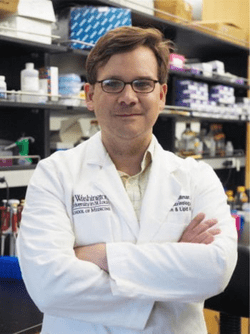On July 17, Jeffrey R. Millman, PhD was featured in AP News’ article titled, “High-flying experiment: Do stem cells grow better in space?”

As scientists see great promise in stem cell research, “researcher Dhruv Sareen’s own stem cells are now orbiting the Earth. The mission? To test whether they’ll grow better in zero gravity.”
In the article, Millman and other scientists contribute their expertise and insight to the gravity dilemma. Which is that “the planet’s gravity makes it tough to grow the vast quantities of cells necessary for future therapies that may require more than a billion per patient.”
Millman expresses that stem cells require vigorous stirring to avoid clumping or falling to the bottom of the tank, and that this stress often causes most cells to die. Clive Svendsen, executive director of Cedars-Sinai’s Regenerative Medicine Institute adds that “in zero gravity, there’s no force on the cells, so they can just grow in a different way.”
Read the full article linked below.
